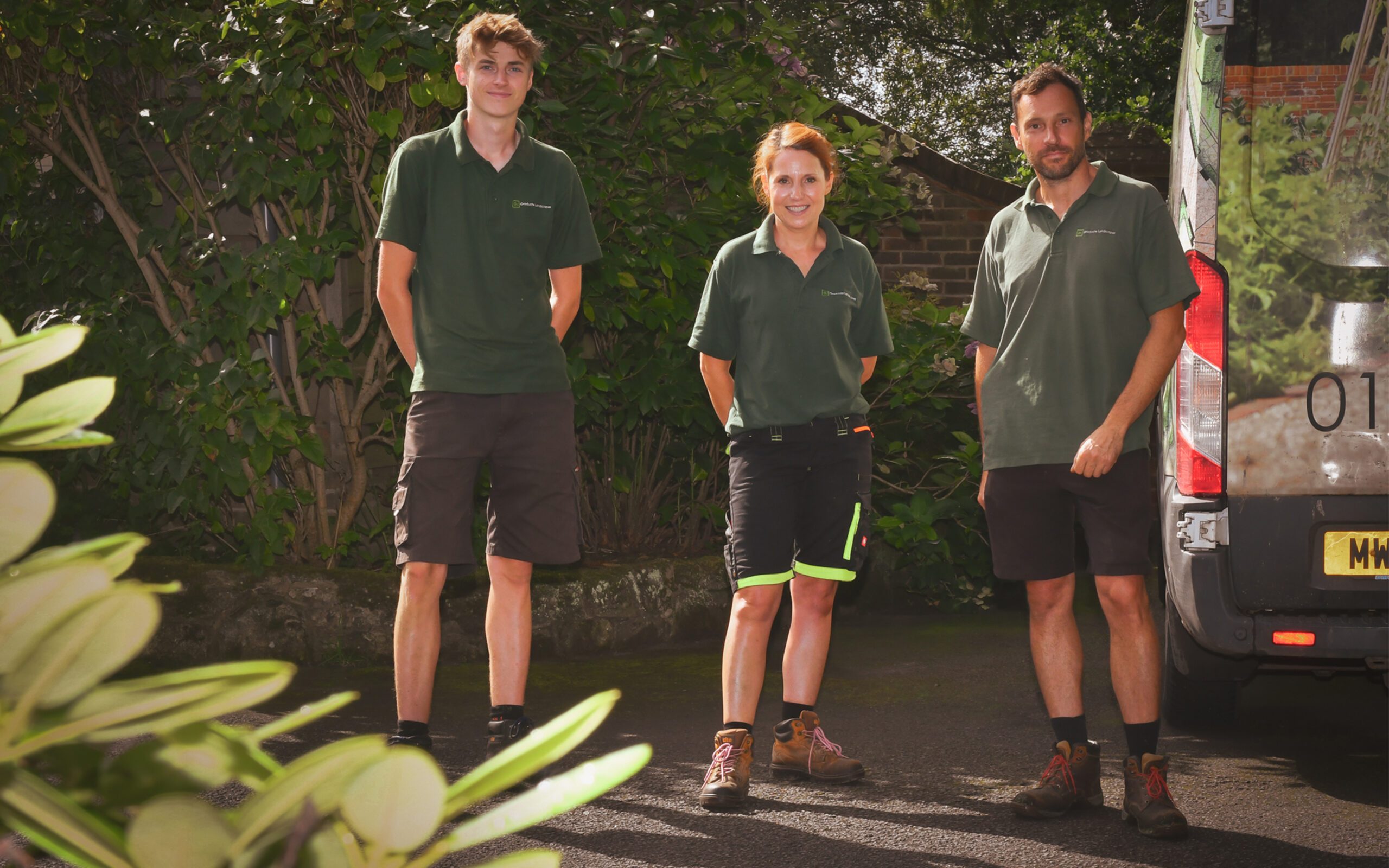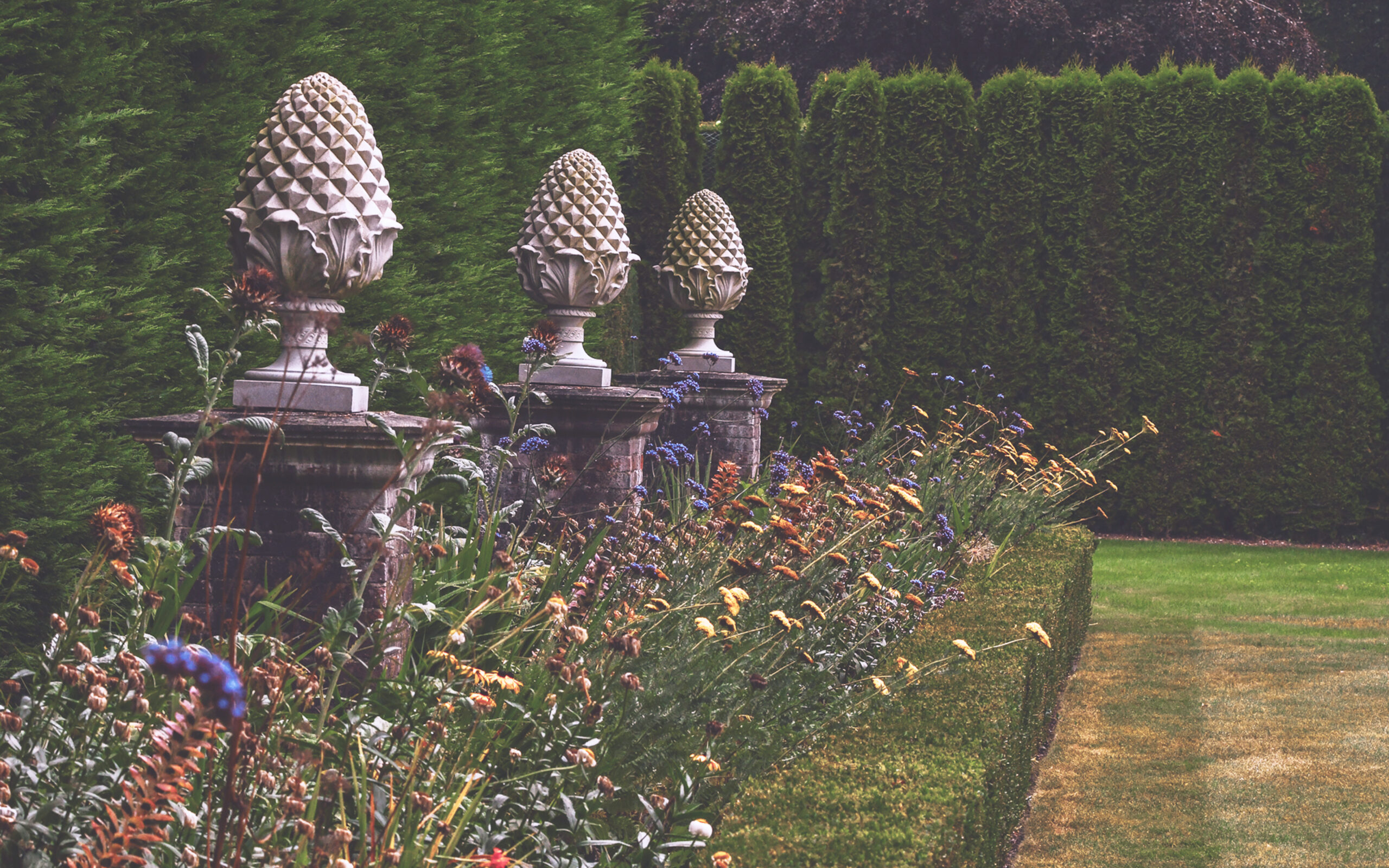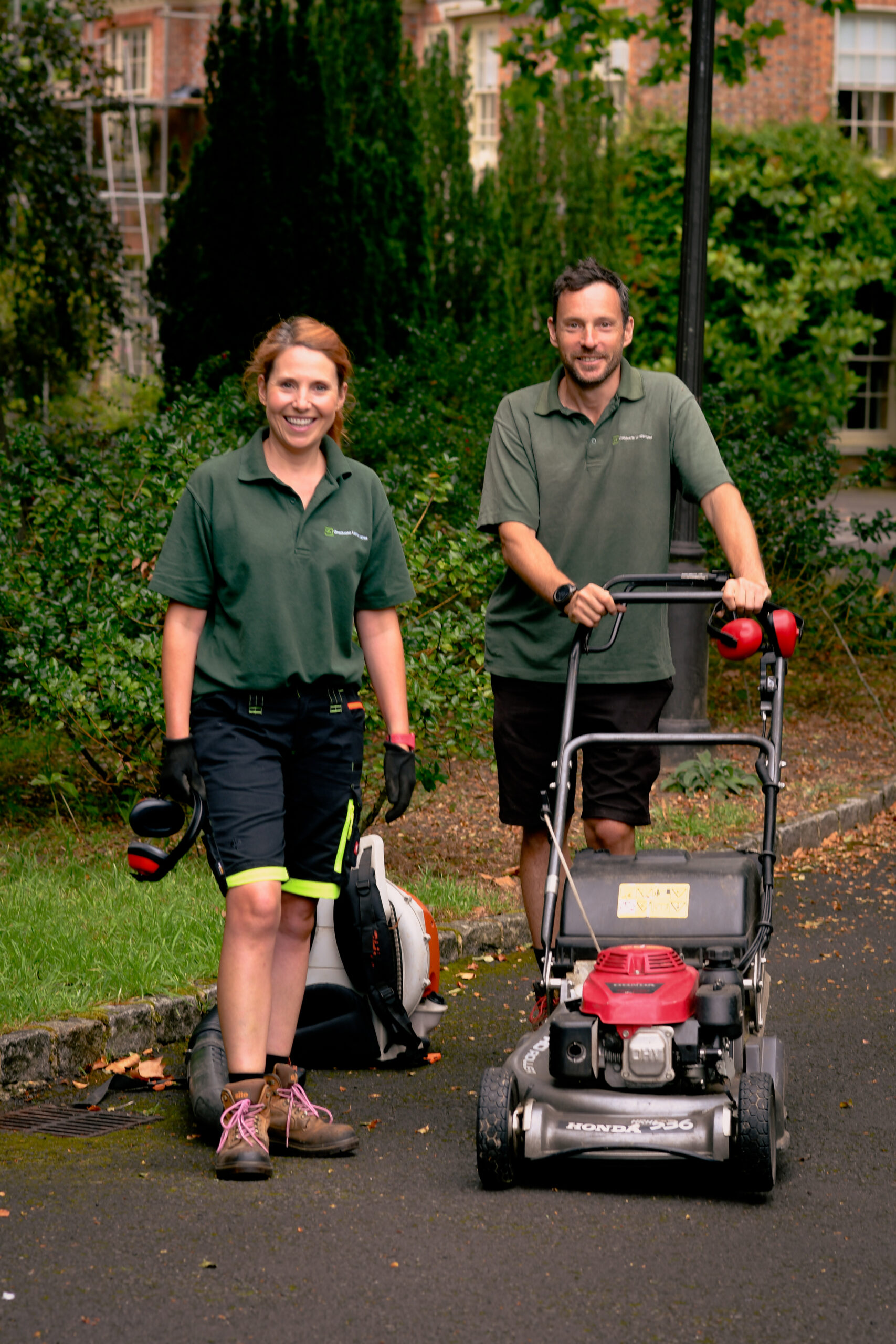Maintenance Mowing, Making Lines While the Sun Shines
Enzo, Esther and Toby were maintaining lawns in one of our Surrey Gardens when we caught up with them recently at work.

Enzo has been a core team member with us at Graduate Landscapes, running a maintenance team for two decades; he has a vast wealth or horti-knowledge and know-how and his colleagues wax lyrical about his straight line mow skills. Esther is a recently qualified Level II horticulturalist and Toby, his ten green fingers are currently in training.
This is a large and very traditional garden, designed many moons ago, and located in Chiddingfold, an attractive and welcoming Surrey village boasting both a triangular village green and a delicious butcher’s shop.
It’s a sizable garden which we maintain for the client on a weekly basis and includes, amongst other key features, a beautifully scented rose garden overlooked by a decked kitchen; surely a blissfully fragrant space of an evening or after the rains.
As well as the significant lawns to tend, scarify, aerate & feed, this garden also features some terrific and imposing trees. There’s a giant Oak – certainly 3-400 years old – a Sequoia, a Monkey Puzzle, tulip tree and a Medlar amongst others.

What’s a Medlar you may be thinking at this point? Mespilus germanica, known as the common Medlar, is a small tree in the Rose family Rosacea. Medlar fruit is a curious delicacy, very squishy, very sweet, and similar to an over-ripe date.
Medlar were popular in medieval times, but are now not so very widely grown. They also have a very rude nickname which we’ll refrain from sharing here. You can investigate for yourselves if inclined to know it!
These lawns are extensive and demand time and expertise to manage. The subsoil at this particular Chiddingfold garden is quite sandy. In late March, a powered rake pulls out the moss. Scarifying involves punching lots of little holes into the lawn. To aerate the lawns, a machine will wiggle and vibrate the ground to allow air to enter. Then, some six weeks or so later, in early May and when the grass is beginning to wake up after winter and kick into its growth cycle, we nourish it with a nitrogen feed.
Grasses are wind-pollinated, and a single flower head of an average grass can produce ten million pollen grains. That’s quite a volume, isn’t it?! The grass family (Poaceae) includes approximately 10,000 species. Grass is supremely important to humanity. Grasses, which include grains such as rice, wheat and corn, are food for both people and animals. Their roots prevent soil erosion. Grasses are used to produce practical items: bamboo is made into many items, such as furniture and boats; savanna grasses thatch roofs. Grasses also figure prominently in landscape design.

Blog post by Sarah Sheldrake